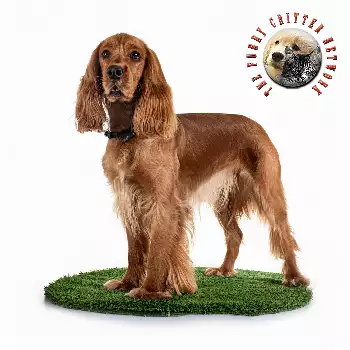Training a Boykin Spaniel is typically a rewarding experience due to the breed's intelligence, eagerness to please, and natural working drive. These dogs were developed as hunting companions that needed to be responsive to handlers while also thinking independently in the field, creating a breed that is both trainable and smart enough to problem-solve. However, their high energy and enthusiasm require consistent training from an early age to channel these traits positively.
The most effective training approach for Boykin Spaniels emphasizes positive reinforcement methods including treats, praise, toys, and play. These dogs are highly motivated by food, making treats powerful training tools, though many Boykins work equally well for praise or the opportunity to retrieve their favorite toy. Clicker training works exceptionally well with this breed, as it provides precise feedback and allows dogs to actively participate in the learning process. The breed's hunting heritage means they genuinely enjoy having jobs to do and take pride in performing tasks correctly.
Early socialization is absolutely essential for Boykin Spaniels. Exposure to diverse people, animals, environments, sounds, and experiences during the critical socialization window (approximately 3-14 weeks of age) helps shape confident, well-adjusted adult dogs. Puppy kindergarten classes provide structured socialization opportunities while teaching basic manners and obedience. Continuing socialization throughout adolescence and adulthood maintains the positive associations formed during puppyhood and prevents the development of fear or anxiety issues.
Basic obedience training should begin as soon as a Boykin Spaniel puppy joins the family. Commands including sit, stay, come, down, and heel form the foundation for a well-mannered companion. Teaching a rock-solid recall is particularly important for Boykin Spaniels, as their hunting instincts and curiosity can lead them to chase birds, investigate interesting scents, or explore beyond safe boundaries. Many trainers recommend using a long training lead during recall practice to ensure the dog's safety while building reliability.
Housetraining Boykin Spaniels typically progresses smoothly when owners maintain consistency and patience. These intelligent dogs quickly learn routines and patterns, understanding where and when elimination is appropriate. Crate training facilitates the housetraining process by providing a den-like space where the dog is unlikely to eliminate. Most Boykin Spaniels are fully housetrained by six months of age when their training follows consistent schedules and positive reinforcement principles.
Leash training deserves special attention with Boykin Spaniels. These energetic dogs can pull enthusiastically on leash, especially when young and excited. Teaching loose-leash walking requires patience and consistency but pays dividends throughout the dog's life. Many Boykin owners find front-clip harnesses helpful during the training process, as they provide better control without putting pressure on the dog's throat. Starting leash training early and reinforcing proper behavior consistently prevents the establishment of pulling habits.
Boykin Spaniels excel in various dog sports and activities that channel their natural abilities and working drive. Hunting tests and field trials showcase the breed's retrieving skills, allowing Boykins to demonstrate the abilities they were bred for. Hunt tests are non-competitive events where dogs are judged against a standard of performance, while field trials are competitive events where dogs compete directly against each other. Many Boykin Spaniels participate successfully in both, earning titles that validate their hunting abilities.
Dock diving is another activity where Boykin Spaniels frequently excel. This sport involves dogs running down a dock and jumping as far as possible into a pool of water. The breed's love of water, natural swimming ability, and retrieving drive make them natural competitors in dock diving. Many Boykins achieve impressive distances and heights in dock diving competitions while having tremendous fun doing what they love.
Agility provides excellent physical and mental stimulation for Boykin Spaniels. This fast-paced sport requires dogs to navigate obstacle courses including jumps, tunnels, weave poles, and contact obstacles. The mental challenge of learning sequences combined with the physical challenge of executing them quickly appeals to the Boykin's intelligence and athleticism. Success in agility also strengthens the bond between handler and dog through teamwork and communication.
Obedience trials offer opportunities for Boykin Spaniels to demonstrate precision and responsiveness to commands. These competitions require dogs to perform specific exercises including heeling, recalls, retrieves, and stays with accuracy and attention. Rally obedience provides a more relaxed alternative where handlers and dogs navigate a course marked by signs indicating which skills to perform. Many Boykins enjoy these activities and earn impressive titles in obedience and rally competitions.
Exercise requirements for Boykin Spaniels are substantial and non-negotiable. This breed needs a minimum of one to two hours of vigorous activity daily to maintain physical health and mental well-being. Exercise options include long walks, jogging, hiking, swimming, retrieving games, and interactive play. Mental stimulation is equally important—training sessions, puzzle toys, nose work games, and problem-solving activities tire the Boykin's mind and prevent boredom-related behaviors.
Swimming provides ideal exercise for Boykin Spaniels, as their webbed feet and water-repellent coat make them natural swimmers. Most Boykins take to water enthusiastically, whether swimming in lakes, retrieving from ponds, or playing in kiddie pools. Water activities provide excellent cardiovascular exercise while being gentle on joints. Introducing young puppies to water gradually and positively helps establish lifelong love of swimming.
Retrieving games tap directly into the Boykin Spaniel's genetic heritage and provide both physical exercise and mental satisfaction. These dogs genuinely enjoy retrieving and will often play fetch until exhausted if allowed. Varying retrieve locations—backyard, park, water—keeps the activity interesting and provides different types of exercise. Teaching a reliable "drop it" or "give" command ensures safe, enjoyable retrieve sessions.
Without adequate exercise and mental stimulation, Boykin Spaniels may develop problematic behaviors including destructive chewing, excessive barking, hyperactivity, and escape attempts. These behaviors are not signs of a bad dog but rather indicators that the dog's needs are not being met. Increasing exercise, providing mental challenges, and ensuring adequate attention typically resolves these issues quickly.

